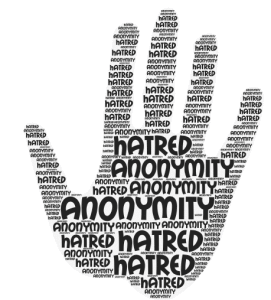 Hate groups and their members have been around for a long time, but the connected world has amplified their insidious messages for people of all ages. A sizeable percentage of the online messages from these groups are aimed at middle and high school children.
Hate groups and their members have been around for a long time, but the connected world has amplified their insidious messages for people of all ages. A sizeable percentage of the online messages from these groups are aimed at middle and high school children.
Recently an article, ‘Listen up.’ How White Supremacists are Recruiting Boys Online, appeared in the September 17, 2019 Washington Post and described in some detail how extremist groups are attempting to recruit adolescents.
Over the years, I’ve shared my excitement about computers, the Internet, the web, and eventually social media with people of all ages, and I continue to believe in the power of technology and learning. Yet, on a regular basis, a small interior voice of discomfort warned me again and again about extremists’ digital activities. Articles appearing on one of my news feeds would catch my attention, or occasionally a middle or high school student or a parent would comment about hateful comments seen online. Once a colleague shared an article that described how hate groups recruit kids with cool music.
My discomfort led me to talk seriously to parents, urging them to supervise their kids’ digital activities and suggesting that computers and digital devices be kept out of bedrooms — even for homework.
But 10 or 15 years ago — another age — hate speech and extremists were smaller concerns for adults and schools. Instead, the big digital world issues were cyberbullying, children encountering pornography and the possibility of encountering dangerous strangers. Back then, in that other age, while extremist groups existed, they weren’t especially upfront, and most of us could not have imagined a child using a computer and sitting safely at home, could become a target of a hate group.
Today we live in a different age. White supremacists hand out pamphlets in neighborhoods, hold public demonstrations and marches, and generally feel less fearful about proclaiming what they believe. In today’s world, the people in these groups make extremism feel user-friendly — like a club that’s available online and off, and recruiters demonstrate an uncanny knowledge about the developmental stages of middle and high school kids — especially boys.
Watching the events in Charlottesville two years ago, I was stunned, disgusted, and yes, sad to see those young men, express their anger and their violence. Many looked to be in their early twenties — so young to be so steeped in hate. As I watched the news I could not help doing the arithmetic, subtracting ten years from what I guessed to be their ages. I realized that these young people were likely in middle or early high school a decade before the Charlottesville rally.
Had some of these young men, I wondered, been lonely adolescents sitting at computers, in their bedrooms, so pleased to meet friendly and sympathetic folks online who then invited them to be included in their groups. Did those online “friends” suck those kids into the cesspool of hate — feelings and beliefs they proclaimed ten years later in Charlottesville? It was hard not to consider.
The 21st Century digital world is a wonder, and it has changed our lives in many positive ways. However, it has also enabled young people, and everyone else — to access information and sites that are beyond an individual’s ability to understand. Adults in a family need to be strong mentors, protecting them but, more importantly, helping them understand more about the hate in the world and what to do about it.
More MediaTechParenting Posts
- Is Hate Speech in the Connected World Here to Stay? — December 2016
- Teach Kids to Protect Themselves from Hateful Information Online — July 2015
- Removing Racist and Hateful Comments — A Simple Relevancy Test — March 2016
- Kids, Hate Groups, and the Internet: There’s So Much to Encounter! — October 2010
